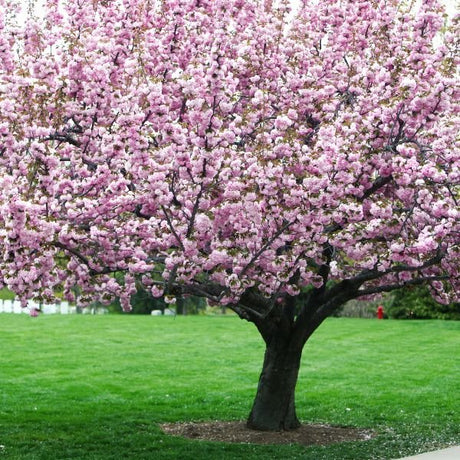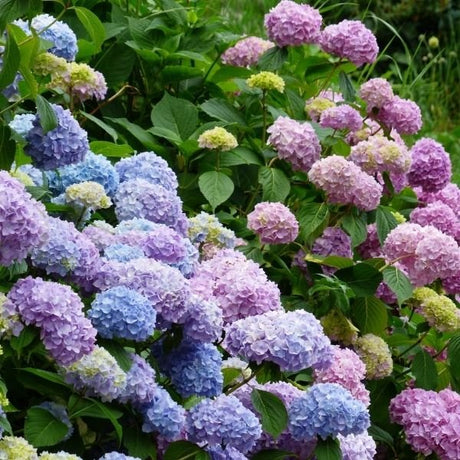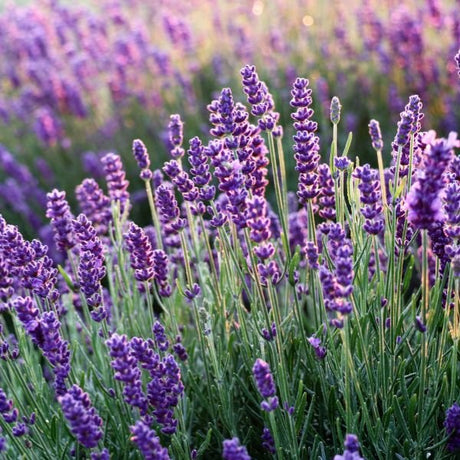Blue Yonder Lily of the Nile
- Stay Protected with Plant Sentry ™
Blue Yonder Lily of the Nile - #1 Container is backordered and will ship as soon as it is back in stock.
To receive an email notification when our next crop is ready, please enter your email below..*
Plant Sentry™
Plant Sentry™
Plant Sentry is designed to protect both consumers and the nursery trade from invasive plant pests and diseases. Sites that display the Plant Sentry protection badge are protected from consumers buying and nurseries shipping material carrying invasive pests and diseases.
This proprietary eCommerce software prevents the shipment of a restricted plant to each state. The Plant Sentry system includes a shipment certification program. The Plant Sentry Compliance Officer works closely with NatureHills.com and each nursery or fulfillment center to ensure only compliant plants are sold to customers.
Click Here to learn more

Delivery and Shipping
Delivery and Shipping
Shipping
To obtain a more accurate shipment time-frame, simply enter your zip code in the “Find Your Growing Zone” box to the right. Our plants are grown all over the country and lead time on items may be different because of this. Once your order is placed, you will also receive the specific shipment time-frame information as part of your order confirmation. Once an item ships, you will receive shipment notification and tracking numbers, so you can follow along while your plant travels to your doorstep. We use FedEx, UPS, or USPS at our discretion.
Due to winter weather we have put a hold on shipping to the areas shown below in grey. You can still order now and we will ship the plant to you during an appropriate time for your zone.
Standard Shipping Rates
At Nature Hills we handle, package and ship the products you order with the utmost care to ensure healthy delivery. Shipping and handling charges are calculated based on the tables below. Please note that some items include an additional handling surcharge, these will be noted on the item's product page.
| From | To | S&H |
|---|---|---|
| $0 | $19.99 | $24.99 |
| $20 | $49.99 | $29.99 |
| $50 | $69.99 | $34.99 |
| $70 | $99.99 | $39.99 |
| $100 | $129.99 | $44.99 |
| $130 | $149.99 | $48.99 |
| $150 | $150+ | Approx 28% |
Click here to see our full rates
Buying Options for Plants
Nature Hills sells a large variety of plants with several options available. Plants are offered in both potted containers and as dormant bare root without soil. Here is a helpful resource to understand your options as you create a beautiful landscape with help from Nature Hills.
Ever wonder what a larger plant will mean for your landscape? Container Sizes are really all about the age of the plant!
Seasonally, Nature Hills offers hand selected, high quality bare root trees, shrubs and perennials. Bare root plants are sold by height from the top of the root system to the top of the plant. Plants may be taller than the height minimums.
- Popular sizes of select trees are 1 foot, 2 feet, 3 feet, etc.
- Popular sizes of select bare root plants is 1 foot, 18 inches, etc.
Nature Hills Container Size by Volume
Keep in mind, specific varieties and different growing conditions can affect the rate at which plants grow. Variations in size may occur.
| Young Plants to 18 Months | ||
|---|---|---|
| Size | Volume | |
| 2"x2"x3" | Ranges from | .18 to .21 dry quarts / .198 to .23 dry liters in volume |
| 4.5" Container | Equal to | .65 dry quart / .72 dry liter in volume |
| Sprinter Pot | Equal to | .63 dry quart / .69 dry liter in volume |
| 4" Container | Ranges from | .31 to .87 / .35 to .96 dry liter in volume |
| 6" Container | Equal to | 1.4 dry quarts / 1.59 dry liters in volume |
| 1 Quart | Equal to | 1 dry quart / 1.1 dry liter in volume |
| 5.5" Container | Equal to | 1.89 of a dry quart / 2.08 dry liters in volume |
| 4"x4"x5" | Ranges from | .8 to 1.1 dry quarts / .88 to 1.2 dry liters in volume |
| 4"x4"x6" | Ranges from | 1.0 to 1.3 dry quarts / 1.1 to 1.41 dry liters in volume |
| 4"x4"x9" | Ranges from | 1.1 to 2.1 dry quarts / 1.2 to 2.3 dry liters in volume |
| 4"x4"x10" | Ranges from | 1.7 to 2.3 dry quart / 1.87 to 2.53 dry liters in volume |
| Plants 18 Months - 2.5 Years Old | ||
|---|---|---|
| Size | Volume | |
| 2 Quart | Equal to | 2 dry quarts / 2.2 dry liters in volume |
| #1 Container | Ranges from | 2.26 to 3.73 dry quarts / 2.49 to 4.11 dry liters in volume |
| 5"x5"x12" | Equal to | 3.5 to 4.3 dry quarts / 3.85 to 4.74 dry liters in volume |
| Plants 2 - 4 Years Old | ||
|---|---|---|
| Size | Volume | |
| #2 Container | Ranges from | 1.19 to 1.76 dry gallons / 5.24 to 7.75 dry liters in volume |
| #3 Container | Ranges from | 2.32 to 2.76 dry gallons / 10.22 to 12.16 dry liters in volume |
| Plants 3 - 5 Years Old | ||
|---|---|---|
| Size | Volume | |
| #5 Container | Ranges from | 2.92 to 4.62 dry gallons / 12.86 to 20.35 dry liters in volume |
| #6 Container | Ranges from | 5.25 to 6.01 dry gallons / 23.12 to 26.42 dry liters in volume |
| #7 Container | Ranges from | 5.98 to 6.08 dry gallons / 26.34 to 26.78 dry liters in volume |
Plant Highlights
Blue Yonder Lily of the Nile highlights at a glance!
Plant Highlights
Plant Highlights
-
Brand
-
Botanical Name
-
Growing Zones
-
Mature Height
-
Mature Spread
-
Sun ExposureFull Sun
-
Moisture
-
Soil
-
Growth RateMedium
-
Pollinator Friendly
-
Fragrant
-
Pruning Time
-
Bloom PeriodSummer

Growing Zones 6-11
Elegant and Exquisite Blue Yonder Lily of the Nile
- Brilliant Blue-Purple Florets
- Clusters Stand on Strong Stems
- Gorgeous Green Strapped Foliage
- Delightfully Fragrant
- Attracts Hummingbirds
- Gets Better With Age
- Increased Cold Hardiness
- Great for Mass Plantings
- Creates Texture in Gardens
- Lovely Container Plants
While the name would lead you to believe it's native to the regions around the Nile River, Blue Yonder Lily of the Nile (Agapanthus 'Blue Yonder') is actually from areas around South Africa.
It makes quite a bit more sense for this perennial to go by its other name, Blue Yonder African Lily. However, we weren't in the official Name That Plant meeting, so we'll stick with the Nile.
The color of this pretty flower will have you thinking about the cool, running water of a river. Each dainty floret is a graceful blue-purple combination. Altogether, it creates showy clusters of intense cobalt blue star flowers
These flower clusters form on top of sturdy stems that rise from the delightful narrow green strap leaves. It might be a delicate perennial, but it's worth the trouble as the plants begin blooming in late spring and continue to produce flowers into fall!
Blue Yonder gets better with age! Each year, it will produce more and more blooms per plant. Plus, this particular type of African Lily is more winter hardy than the average Agapanthus. So colder regions can enjoy the beautiful blue show.
Like other flowers with trumpet type blooms, Blue Yonder will periodically attract hummingbirds, along with the usual butterflies and other beneficial pollinators. Make sure you keep an eye out during peak bloom season!
Another perk this perennial offers is its fantastic fragrance! Planting a couple along your front path will put a smile on your guest's face before ever stepping in your home!
This is one plant you aren't going to want to miss. Fragrant, beautiful, and cold hardy, order a Blue Yonder Lily of the Nile today!
How to Use Blue Yonder Lily of the Nile in the Landscape
There are the classic uses for a stunning plant like this, and then there are the creative, thinking outside the box, uses. We're here for both of them!
Order a few and use them as periodic accents in your perennial flower beds. When in bloom, the flowers will be the perfect height to peak up behind front row plants without overshadowing the taller, back row plants.
This same principle applies to any cottage gardens you're in the process of perfecting. These unique flowers will fit right into even the quirkiest aesthetics.
If your flower beds are already spoken for, you can always plant Blue Yonder as a border specimen. Mix it with other colored perennials to catch the eyes of your neighbors passing by.
Due to the low to the ground green foliage and the shooting stems, planting this African Lily will for sure give you that little bit of extra texture you've been looking for!
Don't forget, Blue Yonder is extra fragrant as well. So try planting under a window or near your front and backyard pathways, where the sweet scent can lighten up your home and leisurely stroll.
Do you have a larger space to fill? Blue Yonder creates a powerful display when planted in mass!
If you live in the colder regions of this plant's hardiness zones, try planting in containers on either side of your entryway. That way you can overwinter them by moving them to a protected area like the garage.
#ProPlantTips for Care
Blue Yonder Lily of the Nile is sometimes considered a rather delicate perennial. But it's easy enough to take care of with the right knowledge.
The most important thing to consider when planting is the amount of light it will get and the soil it will be in. Full sun and rich, well drained soil are by far the best for this perennial, and in the warmer zones these plants will appreciate some midday reprieve from the sun.
If you live in zone 5, you might try planting in a container so that you can move into a porch or garage for the worst of winter. Then, in the early spring, you can move it back outside for its growing season.
It's always a good idea to mulch around the base of your plants. It'll help protect the roots from the worst of the heat and the cold. Not to mention it'll conserve water and keep the garden looking prim and proper.
Very little beats a mass of heavenly Blue Yonder Lily of the Nile. Don't go another season without, order yours from Nature Hills Nursery today!








